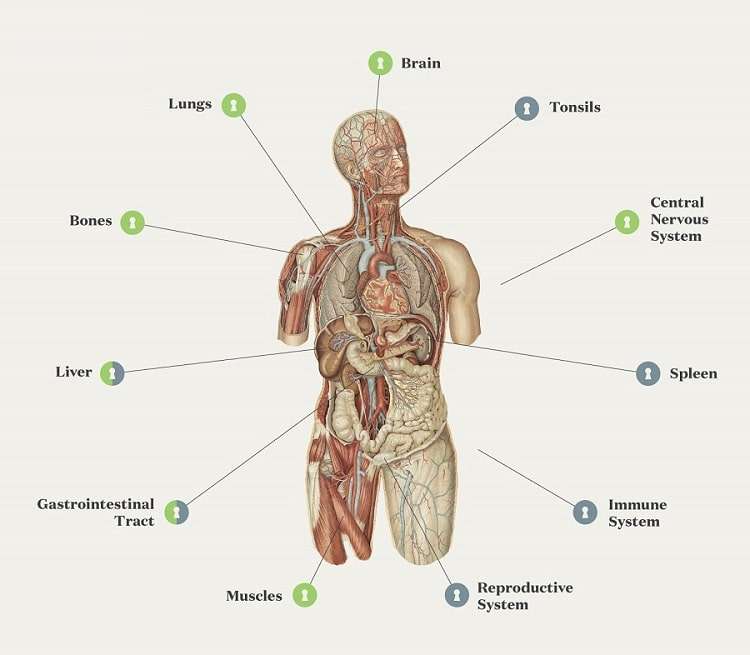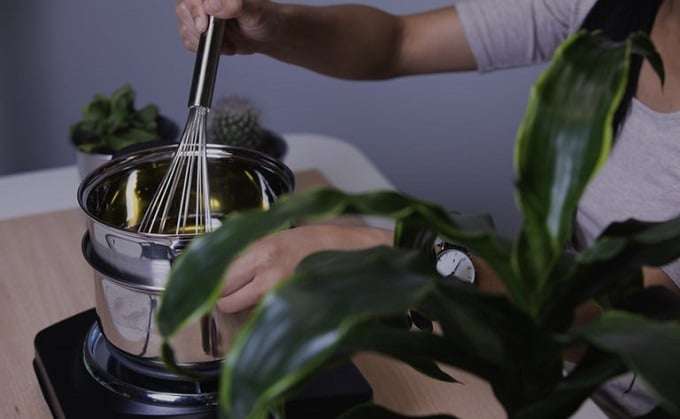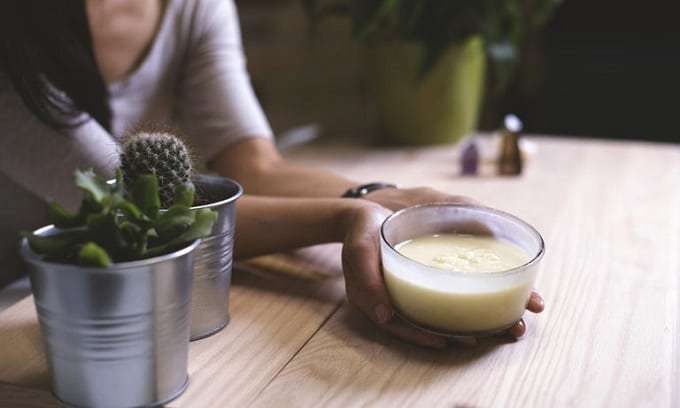HempTalk - Business Blogs and Press Releases
How to Use CBD to Make Your Own Awesome Topicals
CBD topicals are quickly becoming one of the most popular ways to use CBD.
Not only do CBD topicals act quickly and provide targeted relief from conditions like chronic pain and inflammation, but they’re also excellent for a variety of different skin conditions.
People that suffer from skin disorders like acne and eczema are discovering how well CBD works for them and how superior it is than traditional skin creams with similar goals.
We regularly receive a variety of questions about CBD.
And we’re finding that a lot of people want to know how they can make their own CBD topicals. Everyone is interested in how to use CBD tinctures and isolates and create their own self-made creams and lotions. Some even want to know how to create their very own fully custom creams, salves, and lotions.
Before we discuss how to make your own CBD topicals, which is really easy and a lot of fun, let’s talk about why you’d even want to do this in the first place.
We will cover the benefits of CBD topicals and why they are used.
Why Make Your Own CBD Topicals?
CBD topicals are known to work quickly and effectively, offering almost immediate relief from a variety of different conditions ranging from muscle aches and pains, to inflammation and joint pain associated with conditions like arthritis.
Acne
CBD topicals can provide relief from troubling skin conditions like acne and eczema. If you’ve got troubled skin and haven’t tried a CBD topical, it’s definitely an option to consider.
There are both anecdotal and peer-reviewed researches that shows the beneficial effect of CBD on acne1. Studies have linked CBD to a reduction in the appearance of blemishes as well as red, inflamed skin.
A clinical review published in 2019 indicated that CBD, one of the 113 Cannabinoids found in Cannabis, can modulate the keratinocyte proliferation, and has anti-inflammatory and antibacterial effects, making it beneficial in the management of acne vulgaris2.
Beauty Aid
Some even say that CBD has an anti-aging effect, due to the powerful antioxidant properties it contains. Antioxidants have shown to help slow down the aging process by reducing free radical damage to skin cells and increasing oil production that slows down with age3.
Reduce Stress and Tension
CBD topicals are amazing as massage oils, offering relief to sore, overworked, or tense muscles.
A CBD-infused massage lotion can offer an added sense of relaxation to an already fantastic way to de-stress.
Relieve Joint and Muscle Pain
Applied topically, CBD can work wonders to relieve joint and muscle pain.
Whether associated with arthritis or something else, rubbing a CBD topical onto troubled areas may offer quick, localized relief wherever and whenever you need it most.
How Do CBD Topicals Work?
It all comes down to the body’s endocannabinoid system and how CBD works in natural harmony with it.
Located in various cells throughout the body (most notably in the brain and nervous system) the endocannabinoid system is an important modulatory system that research4 shows to be responsible for the brain, endocrine, and immune tissue function.
It’s known to play a significant role in the secretion of hormones involved in our stress response as well as various reproductive functions.
Aside from being found throughout the brain and nervous system, studies5 also indicate the presence of a functional endocannabinoid system in the skin that is associated with several biological processes, including the reproduction, growth, differentiation, and death of various skin cell types and appendages (like the hair follicle and sebaceous gland).
The main physiological function of the skin’s endocannabinoid system is believed to control the proper and well-balanced reproduction, variation, survival, and immune competence of the skin cells.

Disruption of the natural balance of skin cells is believed to lead to the development of several different skin conditions, such as acne, eczema, allergic dermatitis, itchiness, pain, psoriasis, seborrhea (excessive discharge of sebum from the sebaceous glands) and others.
When you apply a CBD topically directly to the skin, it goes to work in harmony with the endocannabinoid system in the skin.
Ultimately, this brings balance back to any disruption within the skin’s endocannabinoid system, working to clear up stubborn skin conditions such as acne, psoriasis, and eczema to name a few.
CBD topicals also provide localized relief that can do wonders for managing pain.
While applying CBD topically prevents it from reaching the bloodstream, it is a known TRPV-1 receptor agonist, which is how it helps modulate feelings of pain.
CBD’s affinity for the TRPV-1 receptor is also why applying CBD topically helps control itchy skin and heat.
Making Your Own Topicals: CBD Tincture or CBD Isolate
When making CBD to make your own topicals, CBD tincture or CBD isolate work best.
Here’s a bit about each so you understand why.
CBD Tincture
CBD tincture is one of the most popular ways to administer CBD.
CBD tincture is made by extracting CBD oil from the hemp plant, where it is then mixed with a base oil (also known as a carrier oil) like MCT (medium-chain triglyceride) oil, coconut, or hemp seed oil.
The result is a CBD tincture that is typically taken sublingually or added to food or drinks.
CBD tinctures are also a great option when you’re looking to make your own CBD topicals.
All you need to do is measure out how many milligrams you desire in the dropper and add to the rest of your ingredients.
CBD Isolate
CBD isolate is a pure, crystalline powder that contains 99% pure CBD.
CBD isolate is made with a more detailed extraction process than a CBD tincture.
Once the concentrated CBD extract is removed from the hemp plant, it goes through an additional multi-step process to remove all traces of plant material, waxes, and all components left behind during the initial purification process.
The result is a fine, white powder that’s 99% CBD.
CBD isolate has no odor and can be taken in a variety of different ways.
It’s a popular way to add CBD to food like smoothies, coffee, and tea as it mixes well and contains zero odor or flavor.
It’s also great ingredient for making your own CBD topicals because it can be measured precisely and mixes excellently with whatever carrier oils you choose to use.
Different Types of CBD Topicals: Salves, Lotions, Balms, and Creams
When it comes to making your own CBD topicals, you’ve got a few options to choose from.
And the good news is, they’re all pretty simple to make at home.
Here, we’ll look at a few different topical options, and what makes each unique.
3 Common CBD Topicals
Salves

Salves are one of the easiest topicals to make at home.
CBD salves are simply a combination of oil (usually coconut or olive), beeswax, and CBD oil or isolate.
They are thicker than lotions and creams and typically tend to be a bit “greasy” when applied to the skin.
Lotions
Lotions take salves a step further by adding water into the mix.
CBD lotions are a combination of oil (almond, jojoba, or other liquid oil), water, an emulsifying agent (usually beeswax or an alternative like soy wax or candelilla wax), and CBD oil or isolate.
The main ingredient of lotion is water (70-80 percent). The type of oil you use will largely determine the texture of your lotion.
Lighter oils like sweet almond, apricot, or sunflower will give you a lighter lotion while using shea butter or cocoa butter will produce a much thicker consistency.
Creams
Creams are thicker than lotion, but not as thick as salves.
Creams are thicker than lotions because they contain more oil than they do water. CBD creams are a combination of oil, water, an emulsifying agent, and CBD oil or isolate.
The percentage of oil to water is much higher (roughly 75 percent oil/25 percent water), which offers a thicker consistency best used for very dry skin.
Creams are great in the winter months as they provide serious moisture where you need it most.
So you see, the really big difference in various CBD topicals is the oil/water ratio that’s used to make them.
CBD salves have the thickest consistency of all topicals because they don’t contain any water, while a CBD lotion will have the smoothest consistency because of its high water content.
Making Your Own CBD Topicals

Now that you know what CBD topicals are made of, it’s time to learn how to make your own.
Making CBD topicals is a fun and relatively simple process.
Not only do they give you a way to customize your own blend of an extremely beneficial way to get your CBD on, but CBD topicals also make great gifts!
Keep that in mind during the holidays, on birthdays, or any other occasion that calls for an awesome DIY gift for someone special.
Note: Most recipes call for beexwax but you can use soy wax, candelilla wax, or any other alternative. Just keep in mind you may need to adjust the level of wax in the recipes below if you use an alternative. Also keep in mind that if you use a CBD tincture (as opposed to an isolate), you will be adding the carrier oil of the tincture along with the CBD contained within. Just be aware of these small details as they may change the consistency of your final product. When possible, use a CBD tincture, which has a carrier oil that matches an ingredient you are already adding in your recipe. This will ensure a consistent mixture.
How to Make CBD Salve

Ingredients:
1 Cup Oil (coconut, olive, sweet almond, apricot, sunflower seed, grapefruit seed, etc.)1 oz. Beeswax (or soy wax or candelilla wax if you prefer)3000mg CBD oil/3 grams CBD isolateEssential Oils of Your Choice (optional)Directions:
Heat oil and beeswax in a double boiler (or pot filled with ¼ water brought to a boil, then simmered with a glass pot fitted on top of pot containing oil and beeswax) until the wax melts, stirring well. Add the CBD oil or isolate and simmer over low heat, stirring occasionally until combined. Make sure not to overheat. Remove from heat and allow to cool.If you plan on adding any of your own essential oils, allow your salve to cool but not become solid. Once cooled, add the essential oils of your choice. Once all ingredients are incorporated, pour your salve into your storage container (glass jars with a tight-fitting lid work best) and allow it to cool completely before use.How to Make CBD Lotion
Ingredients:
¾ Cup Distilled Water¼ Cup Oil of Your Choice0.5-1 oz. Beeswax (or soy wax or candelilla wax if you prefer)3000mg CBD Oil or 3 grams CBD IsolateEssential Oils of Your Choice (optional)Directions:
Heat oil and beeswax in a double boiler (or alternative) until wax melts, stirring well. Add CBD oil or isolate and simmer over low heat until fully incorporated, ensuring not to overheat. Allow to cool slightly and add essential oils of your choice. Before the mixture cools completely, slowly add water until your lotion is of the desired consistency. Pour into a storage container. Again, a glass jar with a tight-fitting lid is best. Keep in mind that this lotion won’t “pump” well out of a dispenser.How to Make CBD Cream

(Remember, cream is very similar to lotion. The big difference is the amount of water that’s used.)
Ingredients:
¾ Cup Oil of Your Choice¼ Cup Distilled Water0.5-1 oz. Beeswax (or soy wax or candelilla wax if you prefer)3000mg CBD Oil or 3 grams CBD IsolateEssential Oils of Your Choice (optional)Directions:
Heat oil and beeswax together in a double boiler (or alternative) until wax melts, stirring well. Add CBD oil or isolate and stir well over low heat until fully incorporated. Remove from heat and allow to cool slightly before adding essential oils of your choice. Slowly add water until your cream is of desired consistency. The less water you use, the thicker it will turn out (more like a salve). The more water you use, the more it will be like lotion. Go slow until you reach the consistency you want.As you can see, using CBD to make your own topicals is easy.
If it seems a bit intimidating, remember everything gets easier with time.
Before long, you’ll be whipping up CBD topicals into your own custom-made creations.
Essential Oils for CBD Topicals

We talked about adding your own essential oils.
While this is completely optional, essential oils can offer added benefits of their own, that when combined with the healing benefits of CBD can make a serious blend of wellness.
Some popular essential oils (and their benefits) that you might want to consider adding to your own CBD topicals include:
Lavender: Lavender not only smells amazing but is one of the most beneficial essential oils that exists. Lavender is great for reducing stress and anxiety, healing wounds, clearing up acne, relieving pain, alleviating headaches, and more.Eucalyptus: Eucalyptus is a known anti-inflammatory, antibacterial, and antifungal. It’s also beneficial for alleviate itchy scalp, relieve joint pain, reducing muscle pain, and clearing up acne and skin inflammation.Tea Tree: Tea tree oil is one of the most popular essential oils used in the treatment of acne. When combined with CBD (which research shows is extremely beneficial for acne-prone skin), you’ve got a powerful natural remedy that can help reduce acne and clear up any complexion issues you might have.Ylang-Ylang: If you’re looking for an amazing floral scent in your homemade CBD topicals, ylang-ylang is your go-to. Aside from smelling amazing, this essential oil can help control oil production in the skin and reduce breakouts. Ylang-ylang also helps the regeneration of skin cells, improves skin elasticity, and smoothes out fine lines and wrinkles, making it an awesome ingredient for anyone concerned with aging skin.Peppermint: A great choice when making CBD topicals for holiday gifts because of its scent, peppermint essential oil is also known to be excellent for relieving pain and inflammation associated with arthritis pain6. CBD is also known to alleviate arthritis pain7, making a peppermint CBD topical the excellent gift for yourself or anyone you know that may be suffering from arthritis.Frankincense: Frankincense has been used for thousands of years and is a known anti-inflammatory and antimicrobial8. It also helps to relieve stress, enhance immune function, improve memory, and reduce the signs of aging. It reduce the appearance of stretch marks and has a sweet and slightly earthy woody scent that many find extremely pleasant to the senses.Final Thoughts
CBD topicals are a huge benefit for several different skin conditions. They help providing quick, localized relief to troubled areas of the body (sore back, stiff joints, muscle aches, etc.).
Making your own CBD topicals isn’t just easy, but a fun process that allows you to customize your very own topical creation.
The recipes we provided are a general guideline to making your own CBD-infused topicals.
You can use as little or as much CBD tincture or isolate as you desire to make your own lotions, salves, and creams. Our recipes are just a guideline to give you a starting point of reference.
Adding a few drops of vitamin E will extend the shelf-life of your topicals. And while totally optional, it’s definitely something to keep in mind if you won’t be using the entire jar within a couple of weeks.
One of the best things about making your own CBD topicals is experimenting until you find the perfect blend.
Let us know about your experiments and creations in the comments below!
share your experiences in the diy forum
Interested in trying to make your own CBD topicals? Maybe you’ve already tried? Share your ideas, recipes, and experiences with other CBD School members in the CBD DIY Discussion Forum.
resources
1Oláh, A., Tóth, B., Borbíró, I., Sugawara, K., Szöllõsi, A., Czifra, G., . . . Bíró, T. (2014, July 25). Cannabidiol exerts sebostatic and antiinflammatory effects on human sebocytes. Retrieved January 20, 2021, from https://www.jci.org/articles/view/64628
2Kircik, L. H., MD. (2019). What’s New in the Management of Acne Vulgaris [Review]. MDedge, 104(1), 48-52. Retrieved January 20, 2021, from https://mdedge-files-live.s3.us-east-2.amazonaws.com/files/s3fs-public/KircikCT104001048.PDF
5Bíró, T., Tóth, B. I., Haskó, G., Paus, R., & Pacher, P. (2009, July 15). The endocannabinoid system of the skin in health and disease: Novel perspectives and therapeutic opportunities. Retrieved January 20, 2021, from https://doi.org/10.1016/j.tips.2009.05.004







